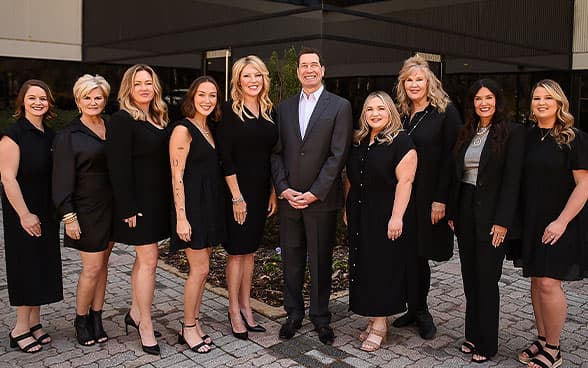The SMAS Lift – The SMART Lift
February 22, 2018 - Rhys Branman, MDIt used to be that facelifts only involved the skin on the face. The surgeons, in the good old days, would simply cut the skin and pull and tighten the skin of the face. Hence the wind-blown look in the old movies, Hollywood Blvd? But the skin would fall again. There was nothing to support the skin with this kind of facelift. I’d like to talk about a few kinds of facelifts you might hear and wonder about.
You may have heard of the “Thread Lift.” This so called “non surgical facelift” is supposed to correct the sagging without surgery. Barbed sutures are inserted and used like hooks to gather the skin layers and pull them up. The thread stays in place to keep the skin in that position. However, this only works for people who do not need serious correction. In other words, it only works on those with small amounts of loose skin or sagging. Of course it requires less downtime, and costs less, but then it is not that effective. I would go so far as to say it is a bit hyped up and actually ends up being a stop gap measure until a deeper facelift is needed.
There are endoscopic facelifts as well. Actually there are several types of facelifts can be done endoscopically that have the following in common. Using a tiny camera the surgeon is working with an indirect visual on a television screen. The incisions are much smaller, such as in the endoscopic brow lift compared to the open brow lift, but I generally prefer direct visual contact with the tissue I am working on, and of course, the correction can also be greater due to access to more of the tissue. In other words, a surgeon can reposition the tissue further up. There is no access to the neck in this type of facelift either so it is really only able to correct sagging in the cheeks. Working with a direct visual is safer too. Of course again, there is less downtime due to the smaller incisions. So we see that both the thread lift and the endoscopic lift is really only for younger patients with minimal sagging and excess skin. This is also true of the MACS (the Minimal Access Cranial Suspension lift, or S-Lift you may have heard of. The MACS involves a small S-shaped incision just in front of the ear. So there is a much smaller incision that might be good for those who want to minimize scarring at the expense of greater correction.
Surgeons now understand that the supporting structure beneath the skin must also be lifted in order to achieve lasting results in a facelift. That supporting structure is the superficial musculoaponeurotic system (SMAS). The SMAS facelift also lifts the deeper supporting structure of the face and neck, the SMAS. The incisions are made above the hairline at the temple and extends downward around your ear. Then the SMAS is pulled up to a higher position and the skinned carefully draped over it. Many surgeons fold and suture the SMAS rather than trimming (resecting) it. Of course the secret to minimal scarring is reducing tension; resection can reduce tension. I find resection to have much better and long lasting results. Hence my SMARTLift Facelift: SMAs Resection and Tightening. Understand that the SMAS facelift is indeed the ideal facelift as far as longevity, safety, and ability to correct sagging of the lower face. How much of that supporting structure is pulled upward determines the amount of correction, and longevity of a facelift. And that is why a SMAS facelift at Little Rock Cosmetic Surgery Center is your best bet.
Call Melinda at the front desk to set up your consultation at 501-227-0707


